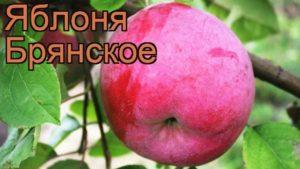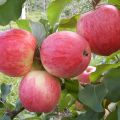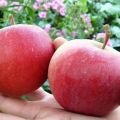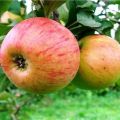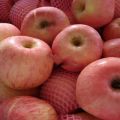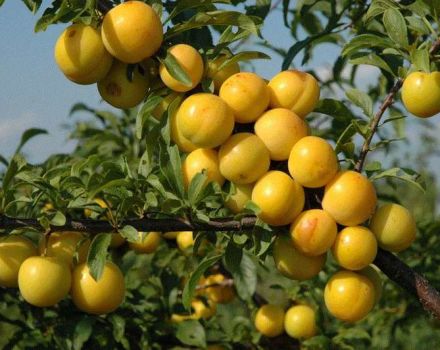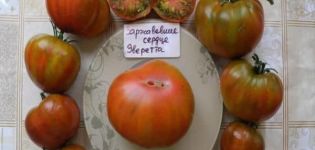Description and characteristics of the apple variety Freshness, subtleties of planting and care
Gardeners are constantly on the lookout for the perfect fruit trees for the site. They each want a strain that is easy to care for and produces a crop regularly. If the selection of a tree does not end in any way, you should pay attention to the Freshness apple variety. The tree is a wonderful combination of important characteristics of the apple tree for the gardener.
Apple tree breeding history Freshness
The variety belongs to the late winter. Bred by Russian breeders in the 70s. The tree was obtained by crossing Antonovka (red barrel) and Welsey. The first crop was harvested in the 80s.
Benefits of the variety
The tree has excellent immunity that protects it from leaf and fruit scab. Gardeners note the high commercial quality of the fruit. The tree gives rich yields of aromatic apples.
Characteristics of culture
When decorating a garden plot, such nuances of a tree as external data, height and diameter of the crown become important. A person is interested in the description of the root system and yield. Knowledge of these nuances will allow you to choose the best place on the site.
External data
The tree is of medium size compared to other apple varieties. The bark is brown and smooth to the touch. The branches are directed towards the sky. Oval leaves are dark green in color.
The green mass stands out in volume, and the plate is concave and wrinkled in the center. Small brown shoots. There are pink stripes on the white inflorescences.
Tree height
Apple subspecies Freshness grows quickly. They reach a height of 4-7 m. They are considered representatives of the middle layer group.
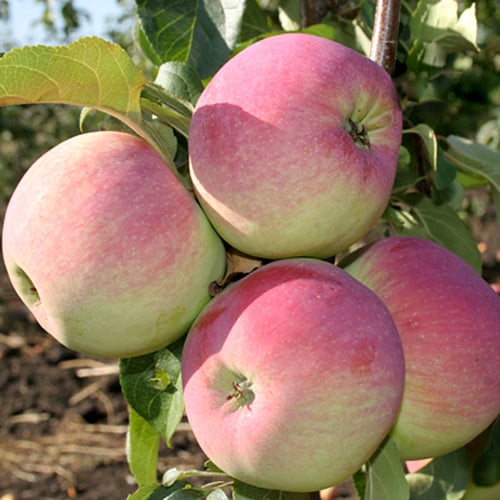
Crown diameter
In most cases - 5-6 m, but the indicator fluctuates depending on the height of the tree. The crown has a medium density and rounded shape. The branches are arranged compactly and directed upwards.
Root system
This part of the tree is the most developed. It is located 1 m deep into the soil. The roots are elastic and absorb nutrients and moisture well.
Yield features
In order to get tasty apples at the end of the season, the tree must go through the fruiting stage. It all starts with pollination, and ends with the collection of fruits. In recent years, the level of productivity of the variety has increased 3 times.
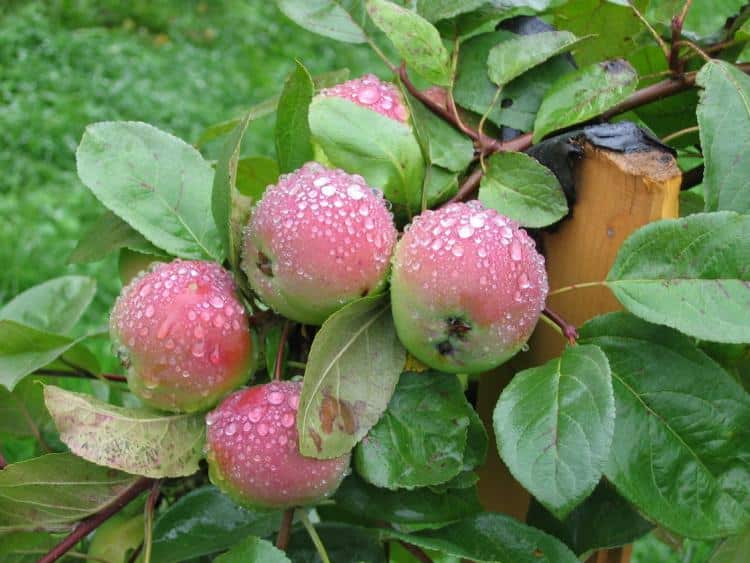
The beginning of fruiting
The apple tree gives the first harvest in the 5-9th year after planting.
Pollinating varieties
Freshness needs cross-pollination. Any variety is suitable for this.
The period of flowering and ripening of apples
The first flowers appear in June. Technical ripeness comes at the end of September. Apples ripen from November to May.
Harvesting and using the crop
The fruits are plucked from the tree in September. This is done carefully so as not to damage the stem. For this purpose, use scissors or a knife.
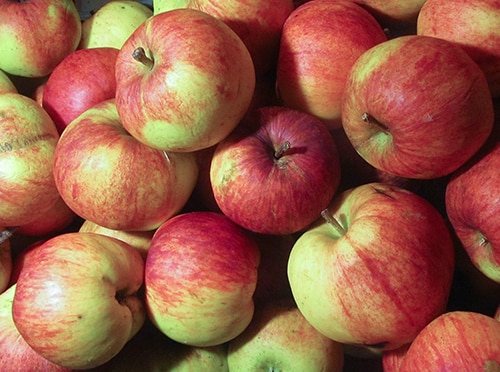
Dried fruits are made from the fruits, they are used to prepare low-alcohol drinks. Freshness is perfect for making canned jams, juices and compotes.
Taste and nutritional values of the product
The fine-grained pulp has a greenish tint. It is dense in structure, but easily splits upon impact. Juicy and has a faint apple flavor. Apples are sweet and sour to taste. The fruits contain many vitamins, pectin, saccharides, acids and other elements. Apples also contain P-active substances.
Duration of storage of fruits
Freshness is not a variety that can be eaten straight from the tree. To be suitable for consumption, they must rest for a while. Mature by November. Due to the ability to store for a long time, the fruits remain juicy until May.
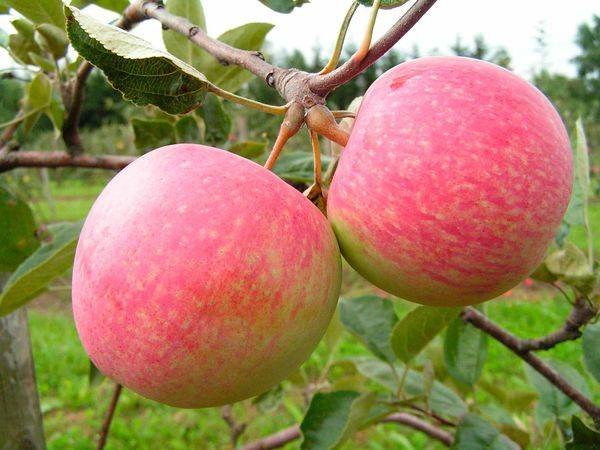
Apple tree technical parameters
These nuances are of interest not only to professionals, but also to beginners in gardening.
Susceptibility to diseases and pests
The tree shows resistance to bacterial and fungal diseases. It is rarely affected by scab.
Frost resistant
Freshness is an apple variety that is frost-resistant. Trees perfectly tolerate the cold season in the middle lane. They are not afraid of sudden changes in temperature.

Growing area
The most suitable region for growing is central Russia. Adapted for development in temperate climates. It will be easier to endure drought if regular watering is provided by humans.
Landing technique
The normal development of the tree depends on the correctness of its implementation.
Preparing seedlings and soil
If possible, it is recommended to choose two-year-old seedlings with an open root system. They quickly take root in the soil. The preparation of the landing pit is a prerequisite. The dimensions of the hole are 80 x 100 cm, the bottom of which is covered with drainage.

Landing time and technology
The optimal time for planting is mid-spring (April). The landing procedure is fast. A seedling is placed in the hole next to the peg. The soil is mixed with organic matter and the tree is covered. The root collar should be 5 cm from the surface.
How to care for planted trees
After compaction of the upper soil layer, the planting is watered with plenty of water. To protect the young tree from pests, spraying with "Epin" or "Zircon" is carried out.
Recommendations for the care of an adult apple tree
The procedures are easy to follow. The person is required to regularly monitor the appearance of the tree. Over time, the gardener will independently determine what procedure the apple tree needs.
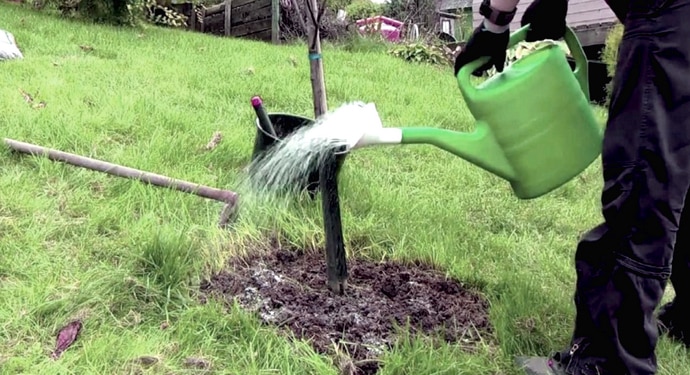
Irrigation regularity
Required to perform in hot weather.
Top dressing
Fertilizers are applied 3 years after planting the seedling. The scheme is as follows:
- Autumn is organic. They are distributed over the area of the near-stem steep and deepen as a result of loosening.
- Spring is mineral. Urea is added to the open ground.
- The beginning of budding is with the content of potassium and phosphorus.
The last procedure is repeated at the time of fruit setting.
Soil loosening
It is considered mandatory and is carried out in the spring, autumn and after fertilization.
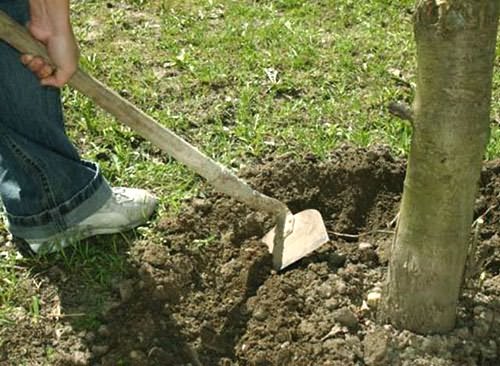
Formation of the correct crown
They are doing this 2 years after disembarkation. As soon as the weather is warm in spring, pruning is recommended. Subject to removal:
- old branches;
- shoots that grow inside the crown;
- branches on which ovaries do not form.
It is also necessary to cut off those that have been damaged over the winter.
Preventive treatments
Root shoots are removed without fail. Every autumn the trunks are whitewashed with lime. Digging up the trunk circles is considered a preventive measure.
Preparing for winter
During the first 5 years after planting, it is recommended to tie the trunks with spruce branches. This will keep the bark from rodents. With the first frost, the trunks are mulched with compost or humus.

